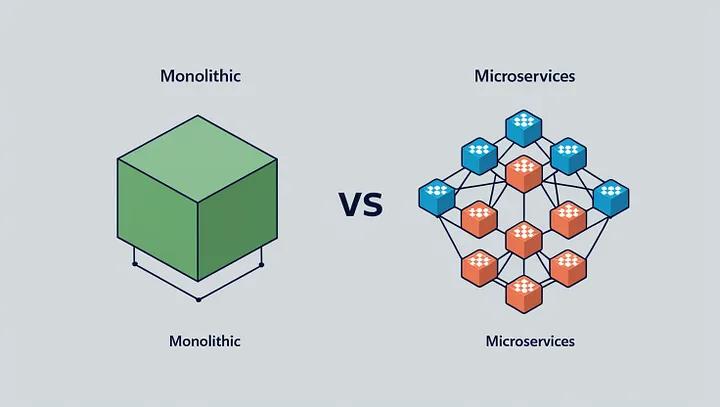Microservices Architecture — A Comprehensive Guide for Modern Web Development
10/25/2024

What is Microservices Architecture?
Microservices Architecture is an architectural style that structures an application as a collection of small, loosely coupled services. Each service is designed to handle a specific business function and can be developed, deployed, and scaled independently. Unlike monolithic architecture, where the entire application is built as a single unit, microservices allow developers to build an application in a more modular way.
In simple terms, microservices break down a large, complex application into smaller, manageable pieces. Each microservice is a mini-application with its own codebase, database, and runtime environment. This architectural style has gained significant popularity in recent years because it provides flexibility, scalability, and faster development cycles.
Why Choose Microservices Over Monolithic Architecture?
Here are some key reasons why microservices architecture is becoming a go-to choice for modern web development:
- Scalability: Microservices allow for individual services to be scaled independently based on demand. For example, if a specific feature like user authentication needs more resources, it can be scaled without affecting the entire application.
- Flexibility in Technology Stack: With microservices, each service can use a different technology stack (programming language, database, etc.) that is best suited for its specific function. This is not possible in monolithic architecture where a single technology stack is typically used for the entire application.
- Faster Development and Deployment: Because microservices are loosely coupled, development teams can work on different services simultaneously without waiting for others to complete their tasks. This speeds up development and allows for continuous deployment and delivery.
- Improved Fault Isolation: If one microservice fails, it doesn’t necessarily mean the entire application will fail. This is in stark contrast to monolithic applications, where a single point of failure can bring down the entire system.
- Easier Maintenance and Updates: Smaller codebases are easier to manage and maintain. Updates can be made to individual services without affecting the entire application.
How Microservices Architecture Works
Microservices architecture involves several core components and principles that work together to provide a robust and flexible application:
- APIs for Communication: Microservices communicate with each other using lightweight protocols such as REST, GraphQL, or gRPC. APIs are the glue that binds the different services together, enabling them to exchange data and perform coordinated functions.
- Service Discovery: In a microservices environment, services need to find each other. Service discovery tools like Consul or Eureka are used to keep track of all active services and their instances. This ensures that requests are routed to the correct services.
- Decentralized Data Management: Each microservice manages its own data, meaning there’s no single database shared among all services. This reduces dependencies and allows for better data isolation.
- Load Balancing and Failover: Since multiple instances of a service may be running, load balancers distribute incoming traffic to different instances, ensuring optimal performance and availability.
- Monitoring and Logging: Due to the complexity of managing multiple services, it’s crucial to have robust monitoring and logging systems in place. Tools like Prometheus, Grafana, and ELK stack (Elasticsearch, Logstash, Kibana) help monitor the health and performance of microservices.
Challenges of Implementing Microservices Architecture
While microservices offer numerous benefits, they come with their own set of challenges:
- Increased Complexity: Managing multiple services requires sophisticated orchestration tools and processes. Ensuring that all services communicate efficiently and reliably can be complex.
- Data Management: With decentralized data management, maintaining data consistency across services can be difficult, especially in transactions that span multiple services.
- Security: More services mean a larger attack surface. Ensuring each service is secure and communication between them is encrypted is crucial.
- DevOps Maturity: To successfully implement microservices, an organization needs to have a mature DevOps culture with automated CI/CD pipelines, monitoring, logging, and infrastructure management.
How Soultware Can Help You Transition to Microservices
At Soultware, we understand that transitioning to a microservices architecture can be challenging. Our team of experts can help you navigate this journey by assessing your current architecture, identifying the right microservices strategy, and implementing the necessary tools and practices to ensure a smooth transition.
Whether you’re starting from scratch or breaking down a monolithic application, our tailored solutions ensure that your business gets the scalability, flexibility, and performance it needs.
Contact us today to learn how we can help you transform your business with a microservices architecture.